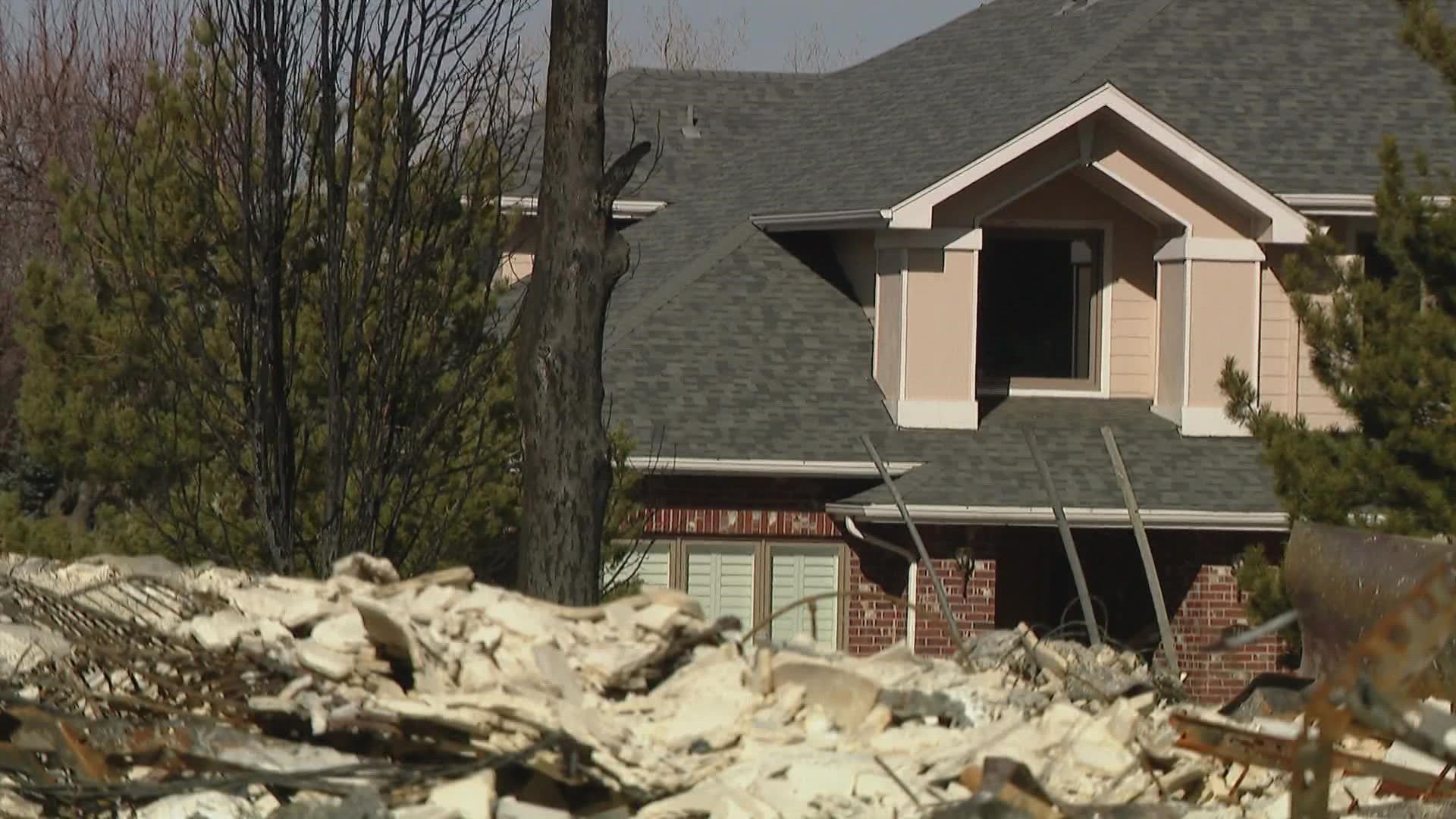BOULDER COUNTY, Colo. — One year ago, The Marshall Fire tore through Louisville, Superior and parts of unincorporated Boulder County, burning more than one thousand homes as it went.
Many things that should never be burned did the night of the fire. Housing material and cars burned toxins that brought concerns over the air quality in the area.
In the days that followed, health officials warned homeowners of the toxins in the debris they were sifting through. The concern wasn’t just for the homes that were destroyed, but also the structures that survived.
A team of scientists from CU Boulder collected data within homes that survived the fire but were in the burned area.
CU Boulder Chemistry Professor Joost de Gouw shared more about the research him team has been doing for the last 12 months, as well as some of their findings.
(Editor's note: Answers may have been edited for context and/or clarity)
9NEWS: What kind of research did your team do following the Marshall Fire?
de Gouw: So very shortly after the Marshall Fire, we heard about a lot of concerns of people returning to their homes that had not been burned and finding a lot of ash in their homes, finding burn smells inside their homes. And so there were a lot of questions whether or not it was safe to return. What were the chemicals people were exposed to? And what could people do to improve the situations for themselves?
So what we did is we quickly got together with a team of scientists and we decided we needed to start making measurements to really answer those questions that were out there. So, we moved some really research grade instrumentation into a home in Superior and we also moved a number of lower-cost sensors, a dozen or so, in other homes in the burned area and then we made measurements for about five weeks of indoor air quality.
What did the results show?
de Gouw: What we found was that initially the indoor air quality had been affected by the fire, that was very clear. But then over the course of those five weeks the concentration inside slowly but surely decreased to what we consider to be normal levels.
So, it did take about 4-5 weeks but then we considered the air to be no longer affected by the fire.
What about outside of the homes? Now that we are year out, is there any concern for the outdoor air quality?
de Gouw: At this point, I don’t think so. But initially it was clear that you could smell outside clearly that the fire had been there. We did make outside measurements and clearly the inside measurements were always higher than outside, so the concern was really focused on the indoor air.
We did get the data for outdoor air and yea, we didn’t see enhancements initially that were really concerning but the smell was there. So there was a curious thing that we could smell that but our instruments didn’t really show high concentrations.
So, is it safe to say the air quality in the burn area is OK now?
de Gouw: Yes. A month after the fire or so was normal and safe to breathe, but we do have to stay open to surprises.
First of all, what burned in the Marshall Fire wasn’t necessarily vegetation. It was a lot of homes, a lot of building materials, cars and so undoubtedly that released toxins that we don’t even know what we should be looking for, right? So our data contained a lot of chemical detail that we’re still going over to look over sort of unexpected toxins that are unique to this fire.
Why is it so important to collect this data?
de Gouw: I think it was very clear that the questions existed in the community. We got so many calls and emails from people who were really concerned about what they were breathing in and so our research really filled a niche. I think one thing that we learned is that air quality impacts were just not limited to the day of the fire. They extended for weeks because our homes soaked up a lot of the smoke and then after the fire was out, our homes returned that smoke to indoor air and so we were still exposed to it for several weeks.
That was something new we learned and that is a lesson we’ll apply to future fires which unfortunately are likely to come.
Are there still some concerns for long-term effects that we may not see right now?
de Gouw: Even now, a year after the fire, we’re still getting emails from people with health concerns and so we have to stay open to the possibility that people are still affected by the fire. This was in many ways a unique event and there hasn’t been a lot of science done on the environmental impact, so we have to keep an eye out for surprises really.
Hopefully in future events should they come, we’ll have our answers readily available and it will help people to know what they’re exposed to and to know what they can do about it.
What’s next in this research project?
de Gouw: We’re done taking data. We’re analyzing a lot of data to look for toxins that are unique to this urban fire and also in the next few months we’ll be publishing our data and really finalizing our results.
SUGGESTED VIDEOS: Marshall Fire Coverage

